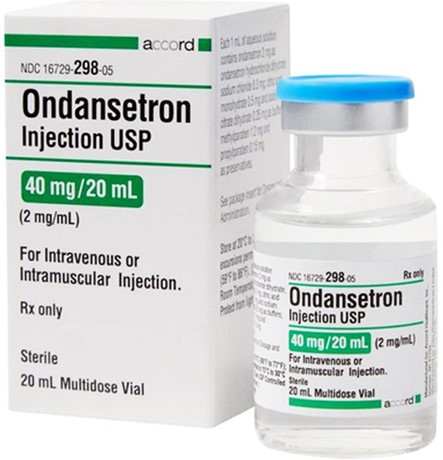A physician orders Toradol (ketorolac) 30 mg IV push every 6 hours x 4 doses. A nurse has Toradol available as a 30 mg/mL injection.
How many millilitres per dose should the nurse administer to the patient?
0.6 mL
0.4 mL
1 mL
3 mL
The Correct Answer is C
The nurse should administer 1 mL per dose to the patient.
This answer is correct because it is based on a simple ratio and proportion calculation. The nurse can set up a proportion as follows:
30 mg / 1 mL = 30 mg / x mL
Cross-multiplying and solving for x gives:
x = 1 mL
Therefore, the nurse should administer 1 mL of Toradol injection to deliver 30 mg of the medication to the patient.
Nursing Test Bank
Naxlex Comprehensive Predictor Exams
Related Questions
Correct Answer is B
Explanation
To find the dose of ondansetron, you need to use the formula for weight-based dosage calculation:
Dose (mg) = Weight (kg) x Prescribed dose (mg/kg)
Since the client's weight is 70 kg and the prescribed dose is 0.34 mg/kg, plug in these values into the formula:
Dose (mg) = 70 kg x 0.34 mg/kg
Simplify and solve for the dose:
Dose (mg) = 23.8 mg
Therefore, the client should receive **23.8 mg** of ondansetron prior to chemotherapy.

Correct Answer is D
Explanation
This numeric form is appropriate, according to the Joint Commission, because it does not use a trailing zero after a decimal point, which is a common cause of medication errors and should be avoided. A trailing zero may be misread or misinterpreted as a larger dose or omited altogether, resulting in a 10-fold overdose or underdose, respectively. For example, when prescriptions have been writen for "Coumadin 1.0 mg," patients have received 10 mg in error¹². Therefore, the Joint Commission requires that a trailing zero may be used only when required to demonstrate the level of precision of the value being reported, such as for laboratory results, imaging studies that report the size of lesions, or catheter/tube sizes. It may not be used in medication orders or other medication-related documentation.
The other options are not appropriate numeric forms because:
a) 3.0 uses a trailing zero after a decimal point, which poses a risk of confusion or error.
b) 0.30 uses a trailing zero after a decimal point, which poses a risk of confusion or error.
c) 0.03 is not equivalent to 0.3, as it is 10 times smaller.
Whether you are a student looking to ace your exams or a practicing nurse seeking to enhance your expertise , our nursing education contents will empower you with the confidence and competence to make a difference in the lives of patients and become a respected leader in the healthcare field.
Visit Naxlex, invest in your future and unlock endless possibilities with our unparalleled nursing education contents today
Report Wrong Answer on the Current Question
Do you disagree with the answer? If yes, what is your expected answer? Explain.
Kindly be descriptive with the issue you are facing.
